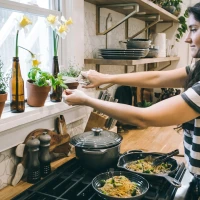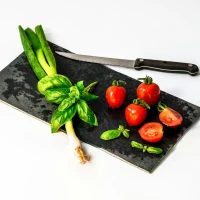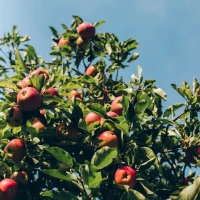Cantaloupes, with their juicy sweetness and fragrant aroma, are a staple of picnic baskets, fruit platters, and healthy snacks. Choosing the perfect cantaloupe, however, can be a quest filled with uncertainty. Every fruit stand and supermarket aisle presents a collection of these beige netted melons, but not all are created equal. Are you tired of bringing home a cantaloupe just to find out it’s lackluster in flavor or texture? Fear not, as this guide is designed to turn you into a cantaloupe-selecting connoisseur. By the end of this article, the mystery behind picking a good cantaloupe will be a thing of the past.
The key to unlocking the secrets to choosing the perfect cantaloupe lies in understanding the characteristics of a ripe melon, discerning the subtle cues, and avoiding common mistakes. Whether you’re a seasoned fruit shopper or new to the cantaloupe game, the tips and tricks we’re about to dive into will elevate your fruit-picking skills. So let’s embark on this flavorful journey and ensure that each cantaloupe you pick is a winner.
Recognizing the Signs of a Ripe Cantaloupe
Choosing a ripe cantaloupe is akin to finding a hidden gem among stones. Knowing the telltale signs of ripeness is crucial in how to pick a good cantaloupe. Let’s explore these features closely:
Look for Visual Cues
The appearance of a cantaloupe can give you significant information about its ripeness:
- Color: Search for a cantaloupe with a creamy beige background. A greenish hue often signals under-ripeness.
- Webbing: A distinct, raised netting pattern is desirable, as it typically indicates sweetness.
- Shape: Opt for symmetrical cantaloupes without any dents or irregularities, as these can be signs of inadequate growth or damage.
Touch and Texture
Feeling the surface of the cantaloupe is another step in determining its readiness to be enjoyed:
- Firmness: A ripe cantaloupe should have a slight give when pressed gently. If it’s too hard, it’s not ready; if it’s too soft, it may be overripe.
- Texture: The netting should be raised and feel rough to the touch, while the spaces in between should be slightly smoother.
The Aroma Test
A cantaloupe’s aroma is perhaps one of the most potent indicators of its ripeness:
- Smell the Blossom End: The end of the cantaloupe where the flower once was, known as the blossom end, should emit a sweet and fragrant scent when ripe.
The Sound of Ripeness
Auditory cues can also play a significant role in your selection:
- Tap the Cantaloupe: A ripe cantaloupe will have a hollow sound when gently tapped. A dull sound can indicate unripe or overly dense flesh.
The Weight of Quality
Hefting a cantaloupe in your hand can also hint at its quality. A ripe cantaloupe will feel heavy for its size—a sign that it’s full of juice and therefore likely to be succulent and flavorful.
Avoiding Common Cantaloupe Pitfalls
When you’re on the quest for a perfect cantaloupe, beware of the common obstacles that can lead to a disappointing choice:
- Overripeness: Steer clear of cantaloupes with overly soft spots or an excessively sweet, fermenting odor, signs of being past their prime.
- Underripeness: Green tinges and a lack of fragrance are giveaways that a cantaloupe isn’t ready to be enjoyed.
- Surface Blemishes: Avoid cantaloupes with dark spots, bruising, or visible damage, which can affect flavor and texture.
Storing Your Cantaloupe for Maximum Freshness
Once you’ve brought your perfect cantaloupe home, proper storage is key to preserving its quality:
- Ripening: If your cantaloupe needs a bit more time, leave it at room temperature for a few days.
- Refrigeration: Cool the cantaloupe in the fridge to slow down the ripening process once it has reached peak ripeness.
The Best Time for Cantaloupe Shopping
To increase your luck in picking a good cantaloupe, plan your shopping around the peak season, which typically runs from June to August. During these months, cantaloupes are at their best in terms of flavor and availability.
Pairing Cantaloupes in Recipes
The true versatility of a cantaloupe shines when it is paired with other ingredients in recipes. Here’s how to complement its sweetness:
- With Salty Partners: Pair cantaloupe with prosciutto or feta cheese for a classic sweet and savory contrast.
- In Refreshing Beverages: Blend cantaloupe into smoothies or cocktails for a hydrating summer drink.
- As a Dessert: Enhance the natural sugars of cantaloupe with a sprinkle of honey or a dash of lime juice.
Tips for Preparing and Serving Cantaloupe
When it’s time to prepare your cantaloupe, follow these steps for the best results:
- Wash the Surface: Clean the cantaloupe’s rind thoroughly to remove any potential bacteria before cutting.
- Safe Cutting Techniques: Cut the cantaloupe on a stable surface, using a sharp knife.
Conclusion: Your Cantaloupe Mastery
By following the wisdom shared in this guide, you’ll have the confidence and know-how in how to pick a good cantaloupe. From assessing the ripeness to properly storing and serving your fruit, you are now equipped with the secrets to choosing the perfect cantaloupe every time. So go forth, apply these tips, and indulge in the delicious, juicy rewards of your newfound expertise.










